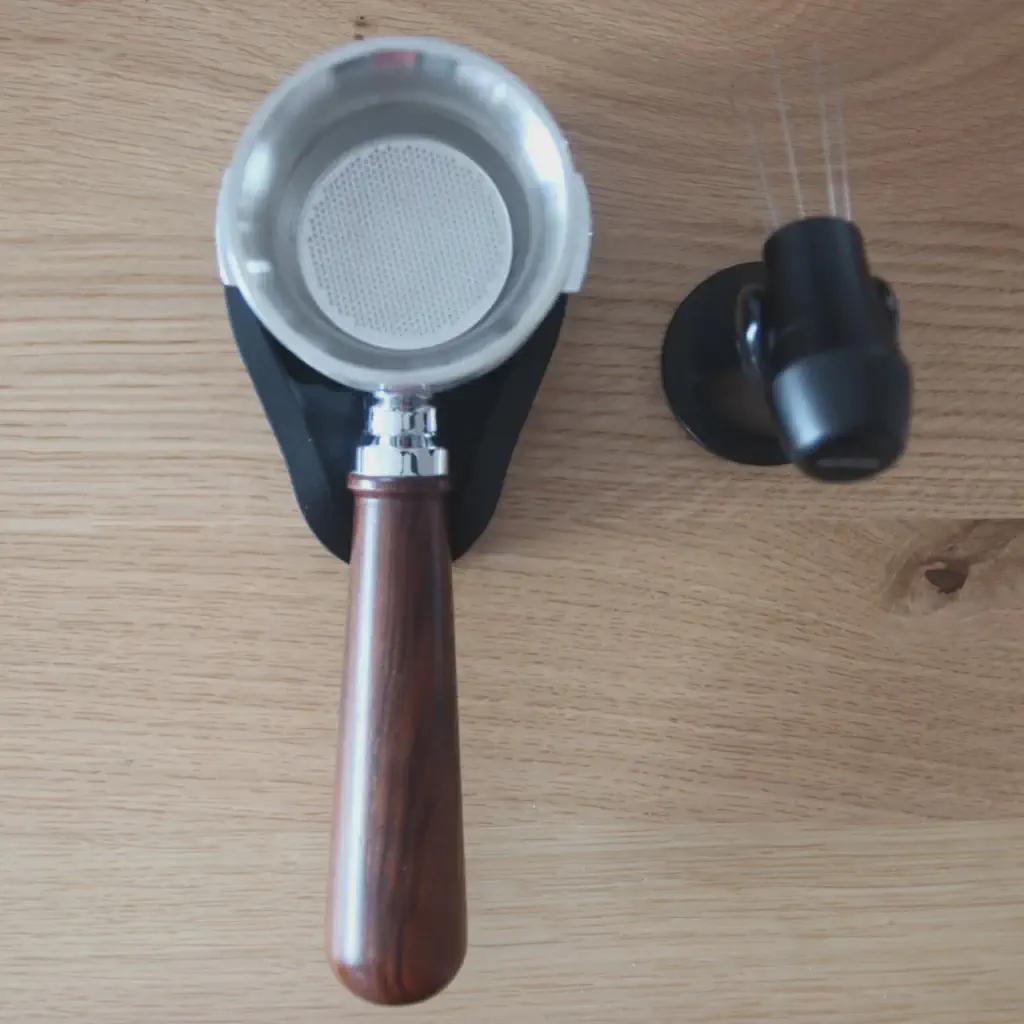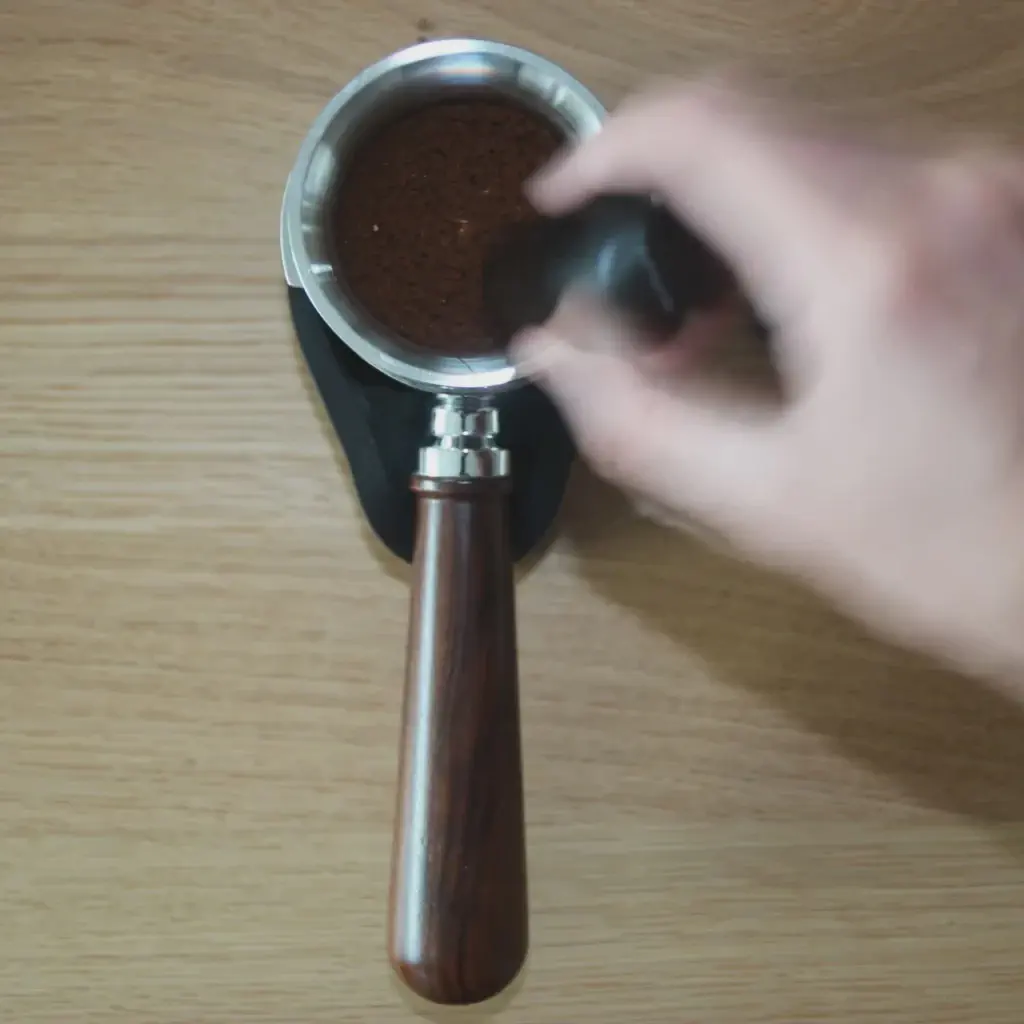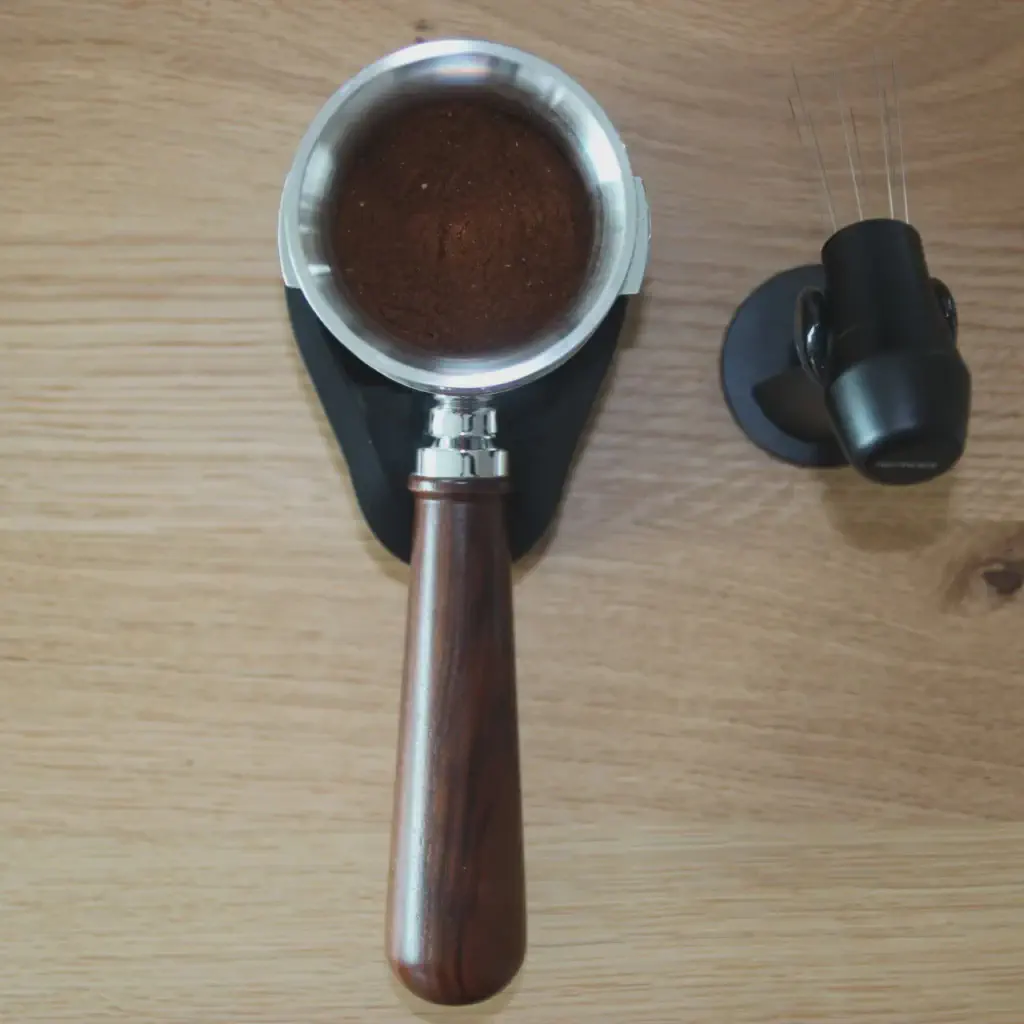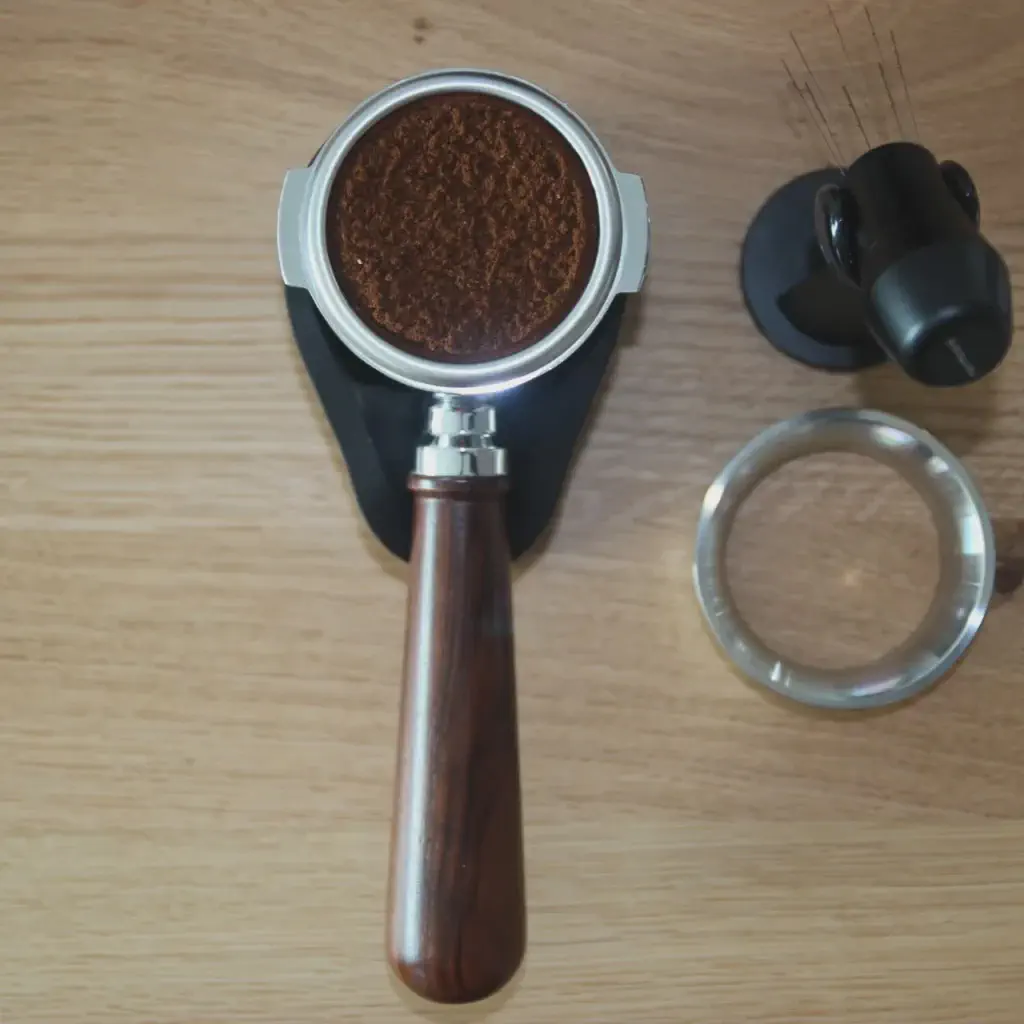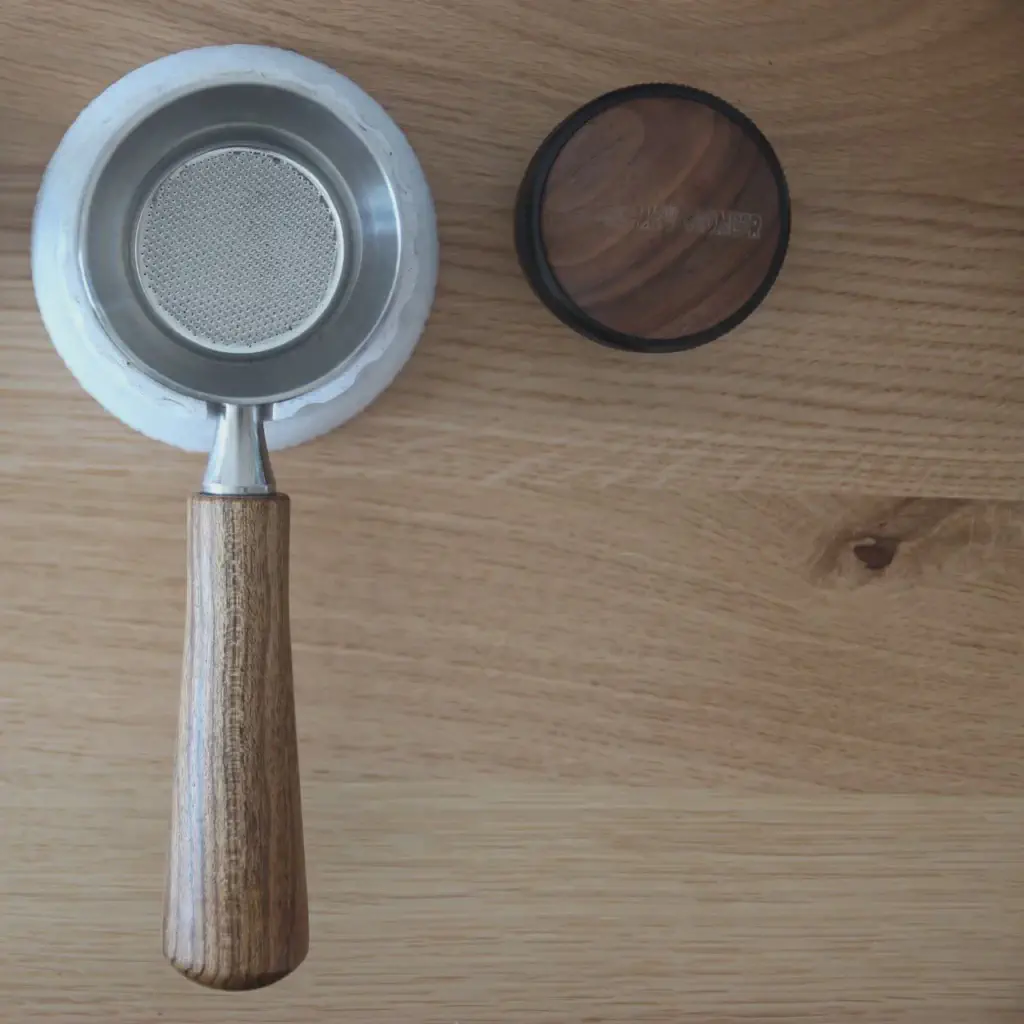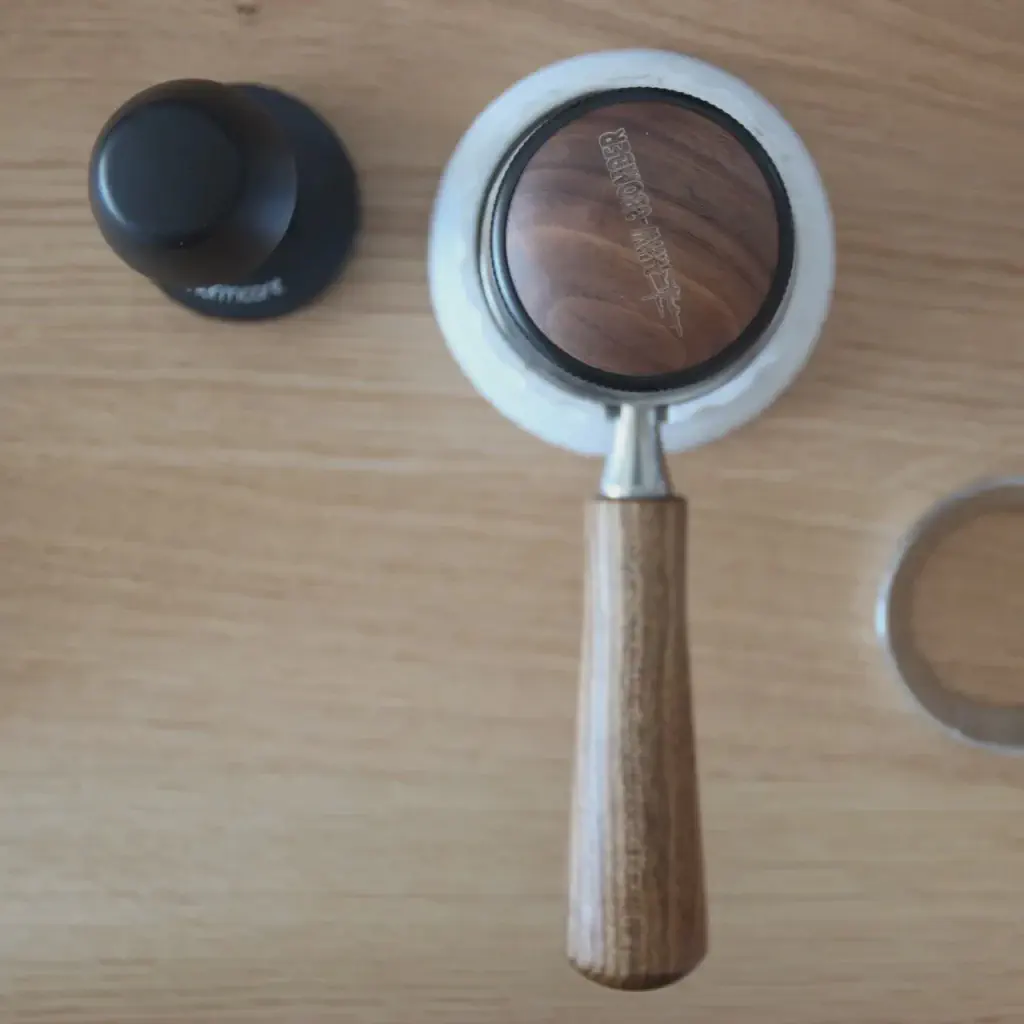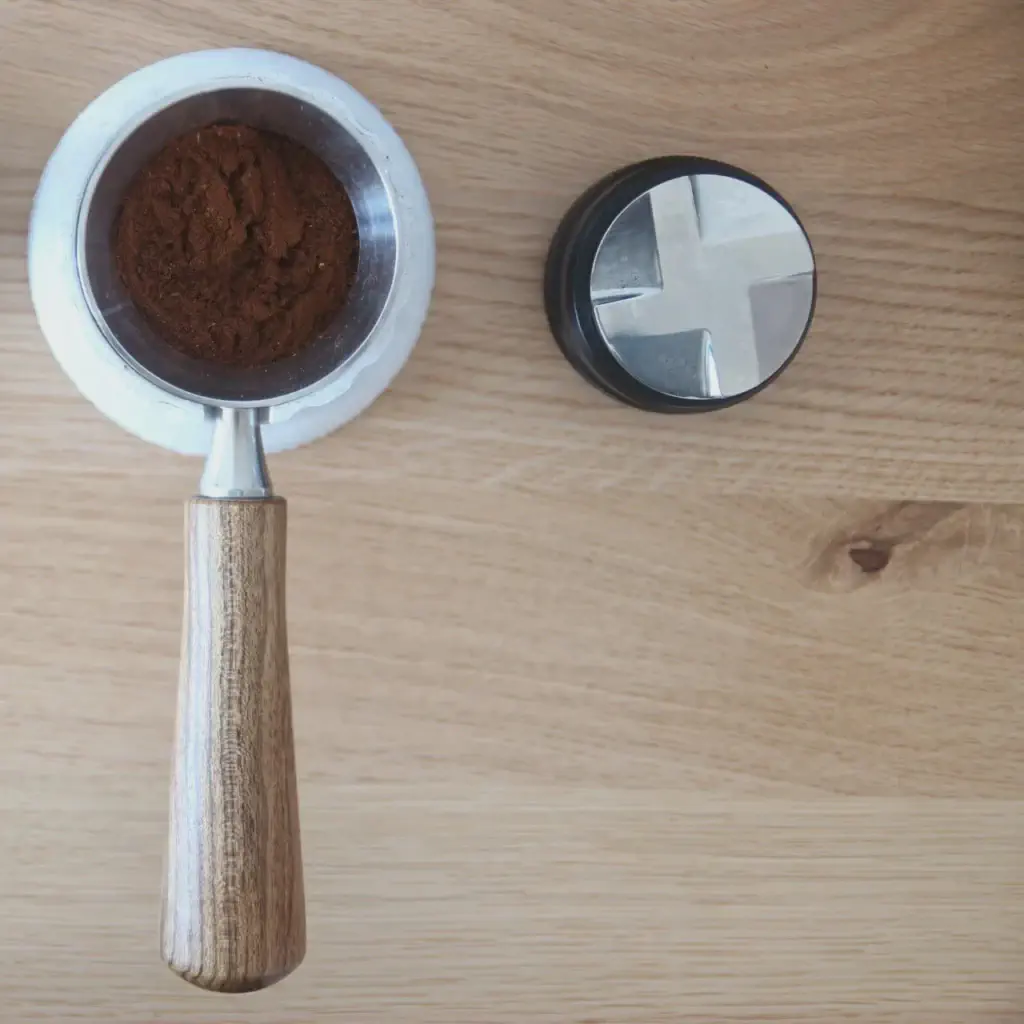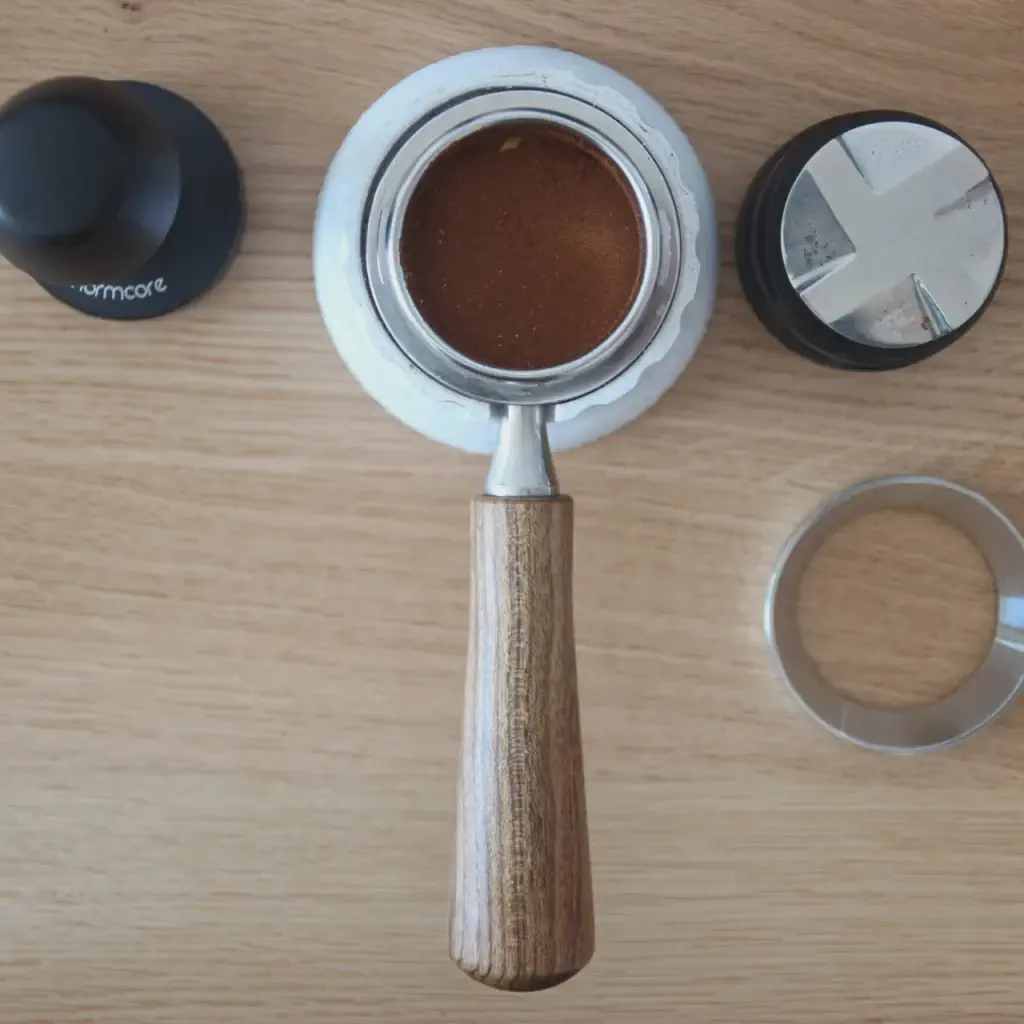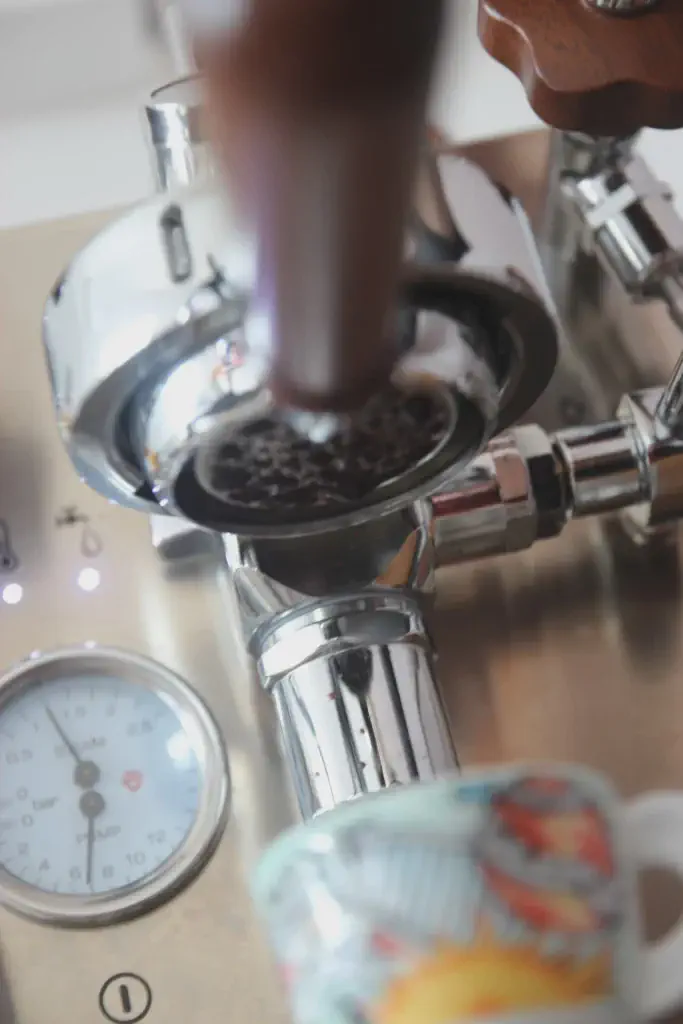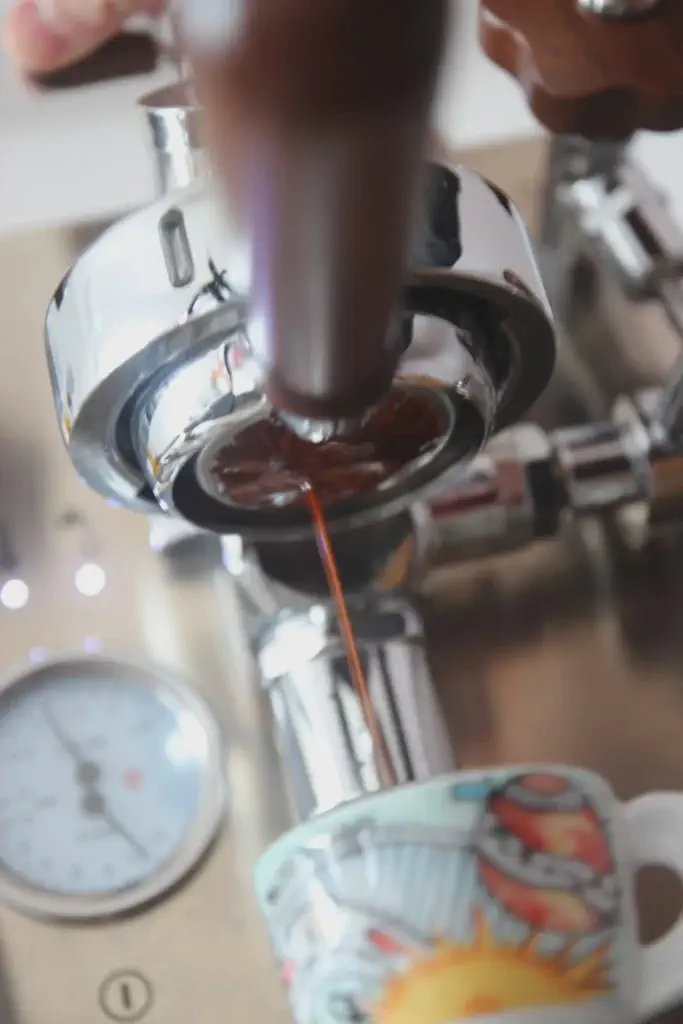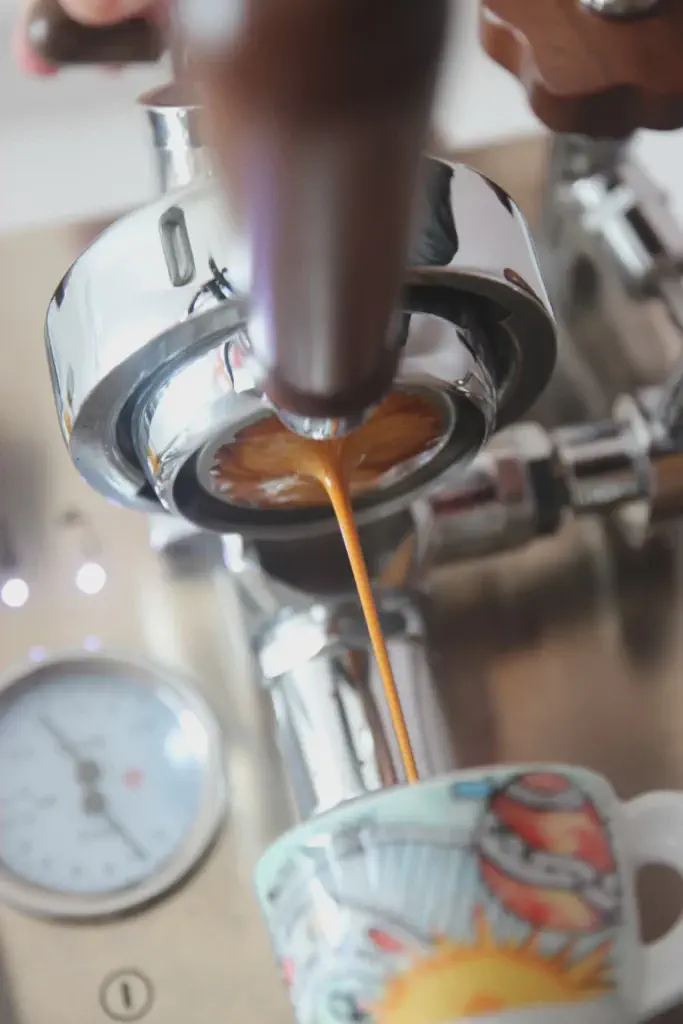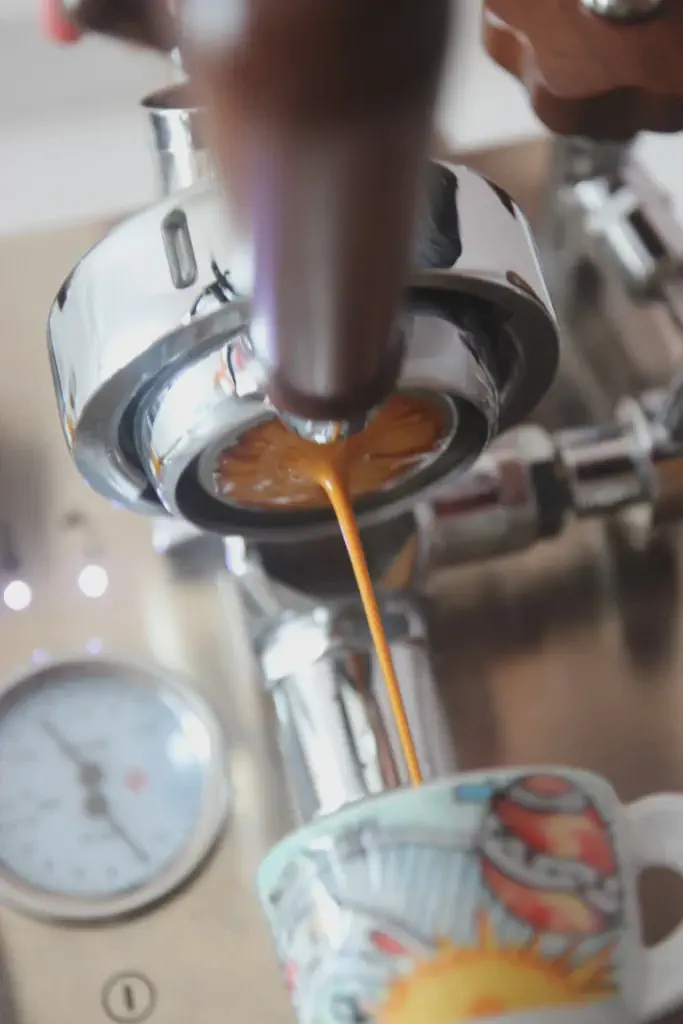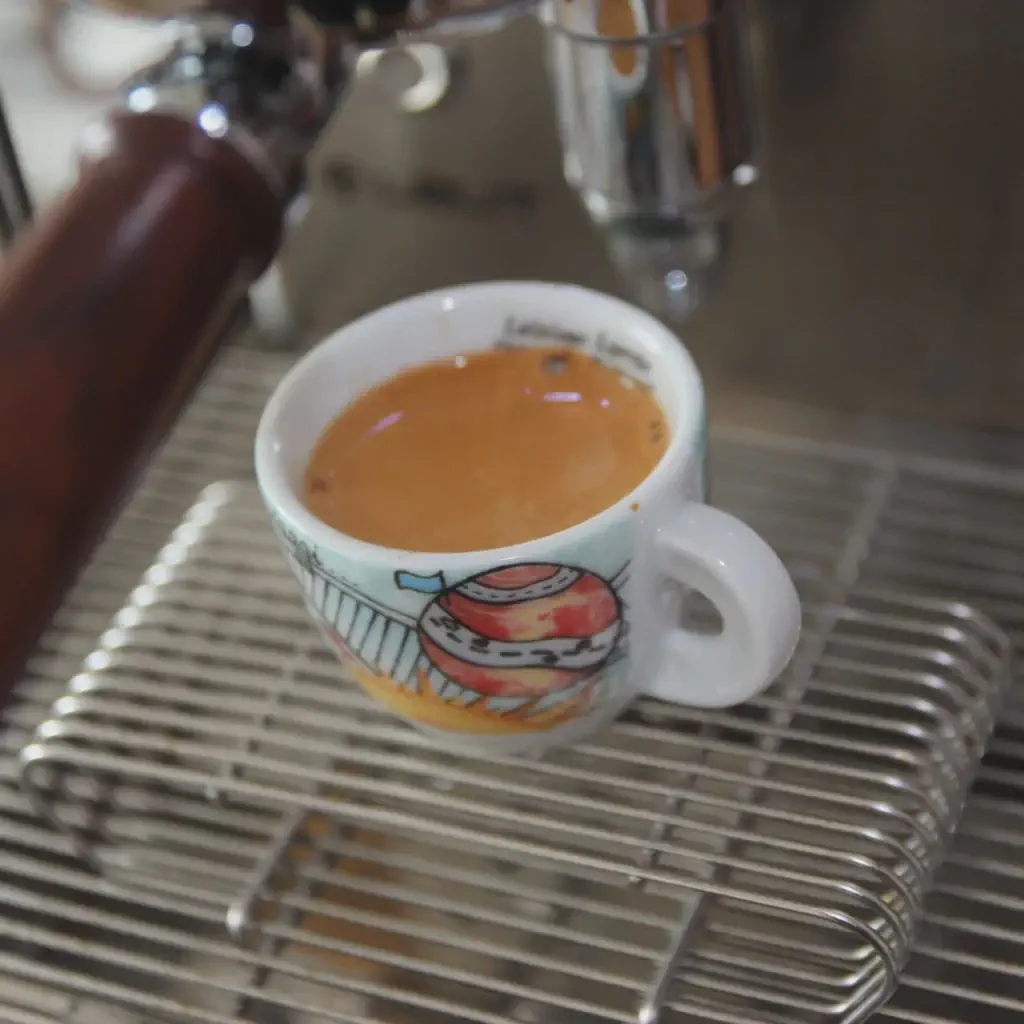4 tips to avoid channeling with a bottomless portafilter

Discover how to avoid channeling with a bottomless portafilter and improve your espresso extractions. Through practical tips and suitable barista accessories, you will learn to optimize grind distribution, tamp correctly, and adjust your coffee’s fineness for consistent results.
Every espresso enthusiast eventually takes the leap: using a bottomless portafilter to make their extractions. However, successfully pulling an espresso without channeling with this type of portafilter requires following a few rules.
What is espresso channeling?
It only occurs during espresso extractions.
Water, seeking the path of least resistance, will flow through certain areas that are too thin or poorly tamped, creating flow channels.
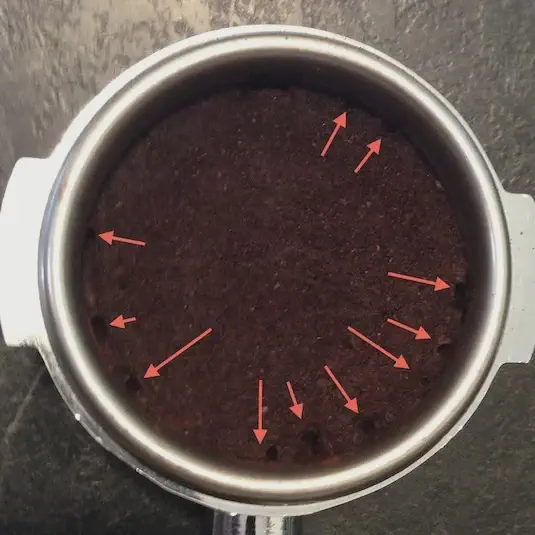
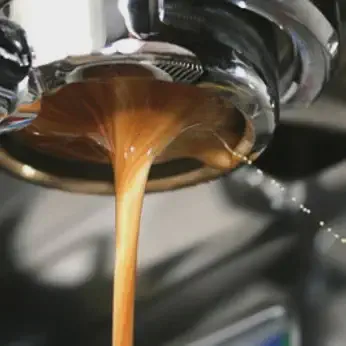
When preparing your espresso, after tamping, if your coffee puck is not perfectly level, water will favor the thinner area. Result: over-extraction on one side, under-extraction on the other, and loss of flavors in the cup.
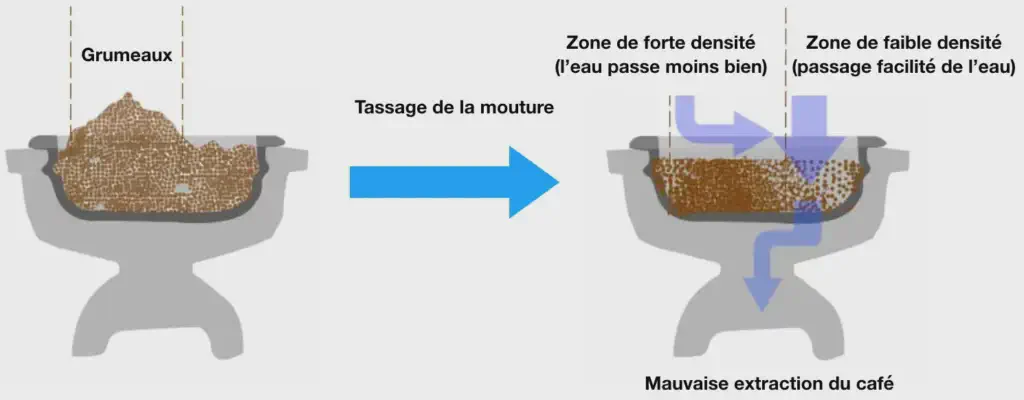
<figcaption>With a bottomless portafilter, channeling is immediately visible.</figcaption>
With a spouted portafilter, this phenomenon is difficult to detect. The bottomless portafilter, however, makes the problem very visual with jets splashing the espresso machine.
Tip #1: The Importance of Uniform Grind Distribution
A homogeneous distribution of espresso grind is essential to avoid channeling.
If the grind is poorly distributed before tamping, this can create zones of uneven density.
These zones promote the formation of channels and therefore an unbalanced extraction.
It facilitates the distribution of the grind and limits the need to correct with a WDT or distributor.
Several tools exist to properly distribute the coffee before tamping.
Reducing Channeling Using a WDT (Weiss Distribution Technique)
The espresso WDT consists of using fine needles to break up clumps and evenly distribute the grind in the basket.
It’s a barista accessory that can be purchased or made yourself (with a cork stopper and 0.3 mm wire).
Personally, I use a WDT from the Normcore brand.
Its needles cover a large surface area, allowing for homogeneous and quick distribution.
Made entirely of aluminum, it comes with a stand and integrates easily into a barista workspace.
Distributing grounds with a coffee distributor
Another effective barista accessory is the espresso distributor (also called coffee distributor).
Find a coffee distributor on Amazon
affiliate link.
It allows you to homogenize the grounds by rotating it on the basket, without needles.
Distributors are available in all price ranges.
A model that’s too light will require manual force.
In practice, I prefer using the WDT because it is more versatile.
The distributor, on the other hand, is limited to the filter diameter (for example 51.5 mm for La Pavoni, 58 mm for Lelit Mara X V2).
Even though it is minimal, it can bother some baristas.
Tip #2: Properly tamp the grounds with an espresso tamper
For uniform water flow, it is essential to tamp straight.
A poorly tamped coffee puck promotes channeling: the water flows through the thinnest part and causes over-extraction on one side and under-extraction on the other.

If you don’t have a tamper with guide, only practice will help you improve.
With experience, tamping straight becomes automatic.
Which espresso tamper to choose?
If you want to invest in a tamper equipped with a guide, I recommend two models tested on CoffeeGeek:
Both products are excellent, but I have a preference for the Normcore V4 affiliate linkcalibrated tamper:
- Ability to adjust the applied force (thanks to interchangeable springs).
- Integrated guide for perfectly straight tamping.
- Wide range of diameters, including 58.5 mm (not available for the MHW 3Bomber).
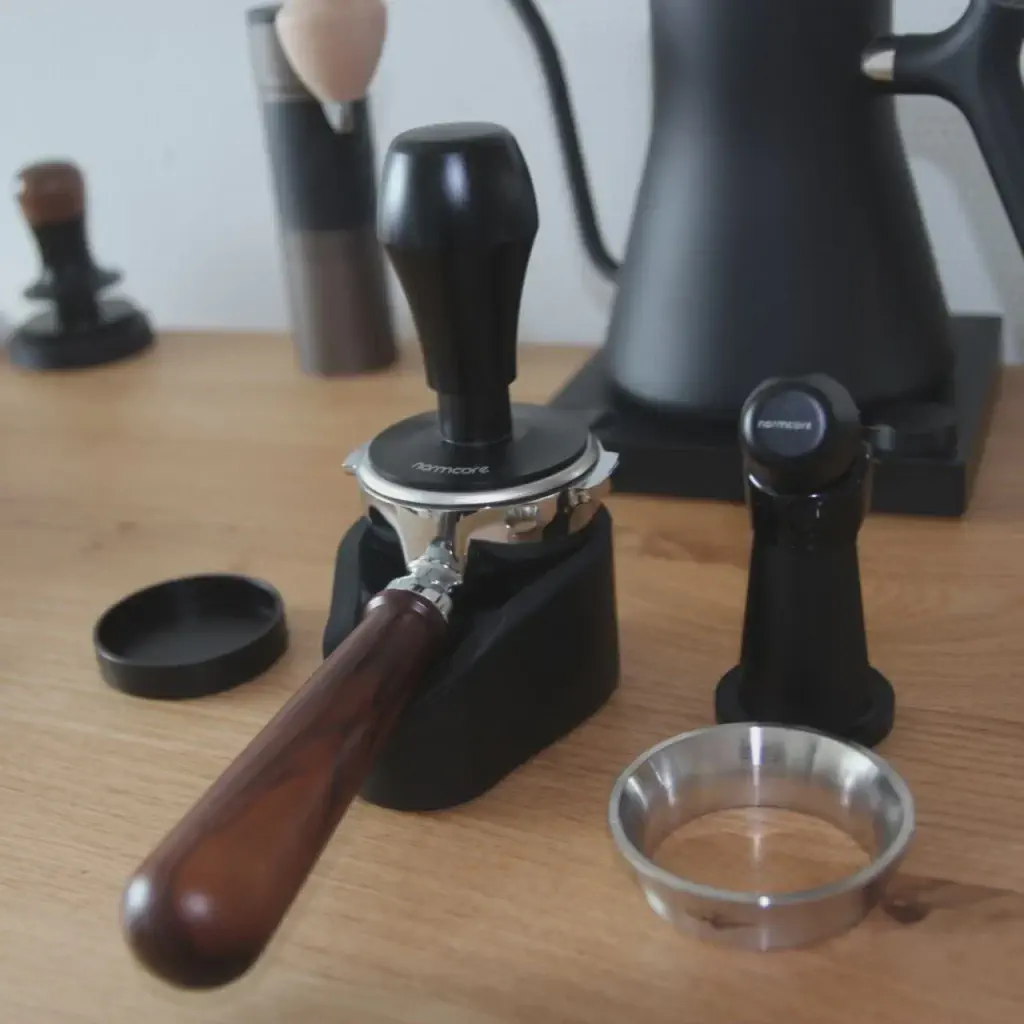
To properly choose your espresso tamper, favor a model:
- that you find aesthetically pleasing,
- comfortable to hold,
- adapted to the diameter of your baskets.
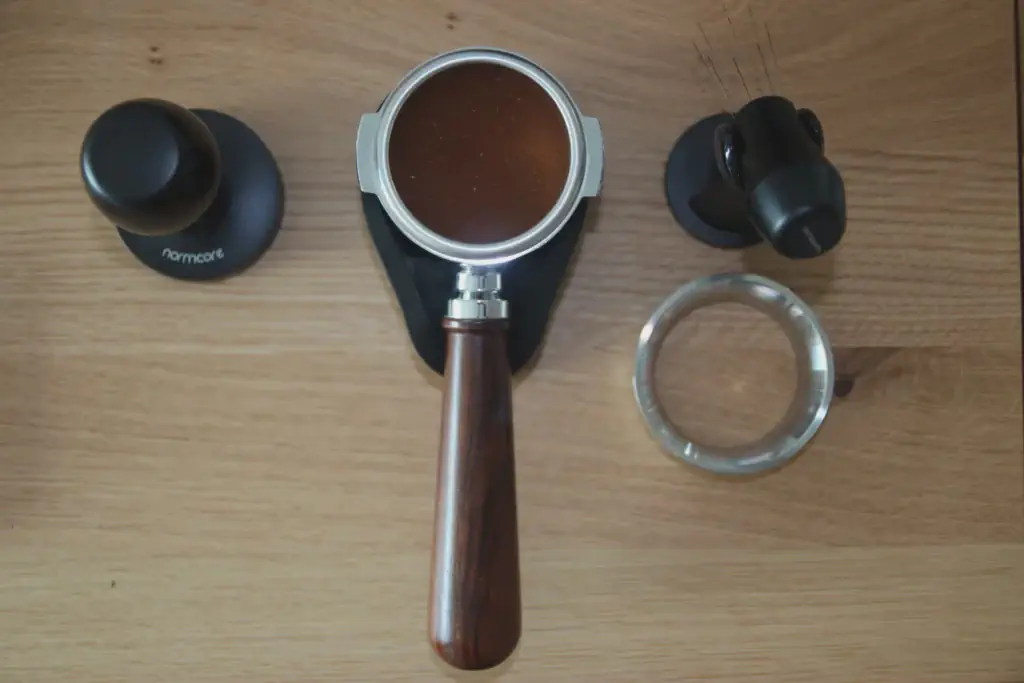
Tip #3: Use a puck screen to reduce channeling
In some cases, the machine’s shower screen sends a water jet that is too powerful in the center.
This can create a crater in the coffee puck and cause immediate channeling.
This metal mesh breaks up the jet, distributes the water better, and protects the shower screen from residue.
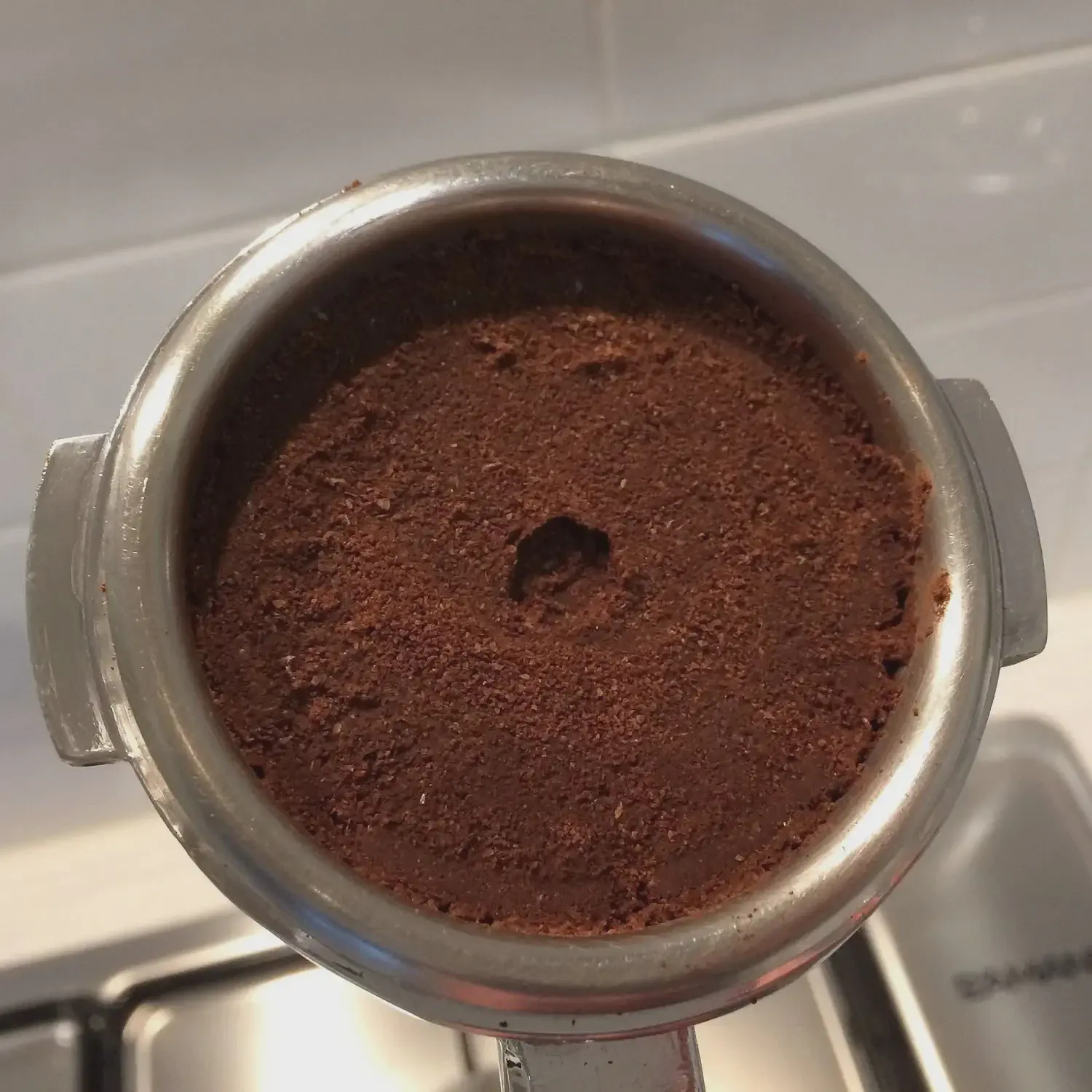
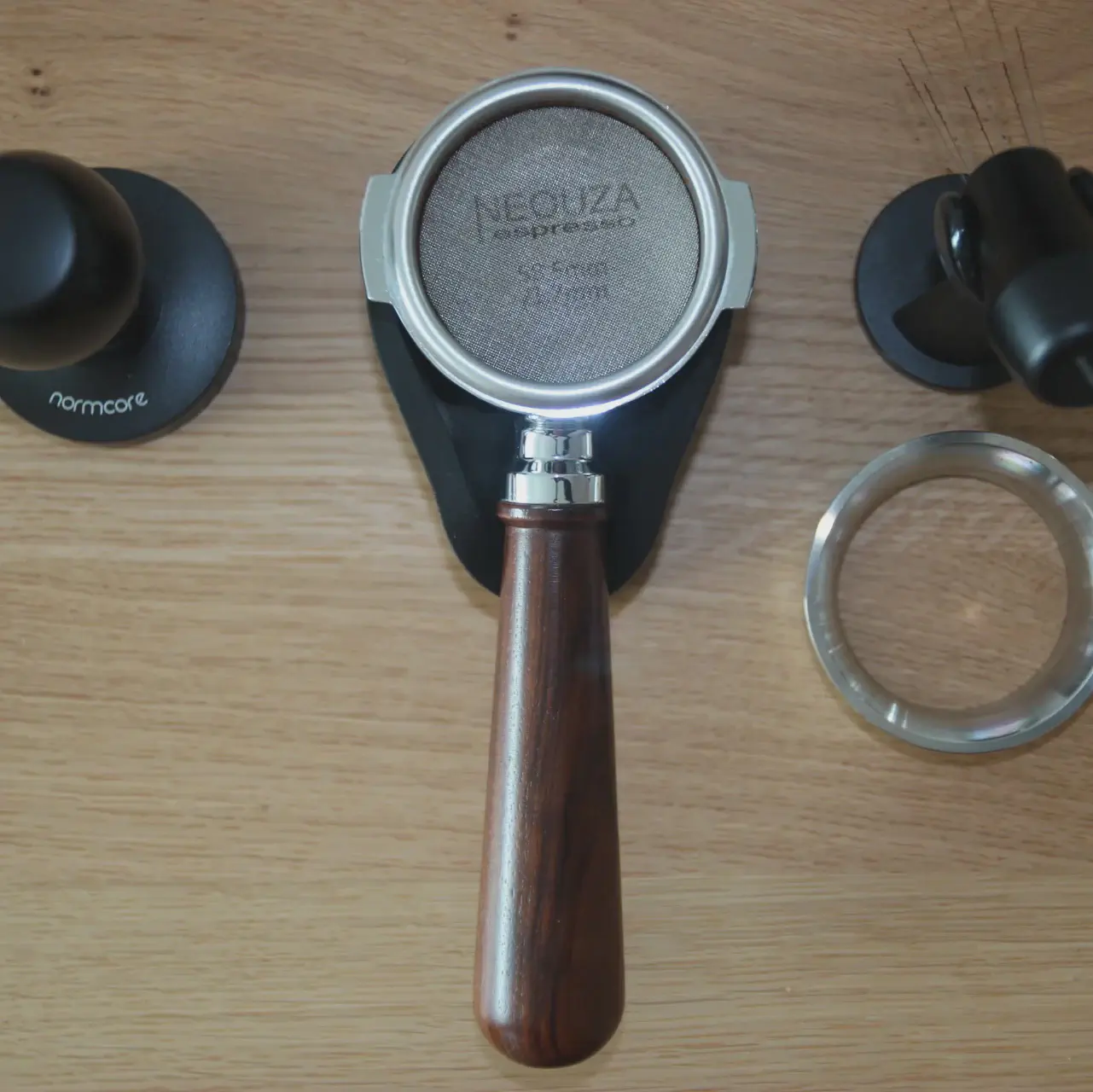
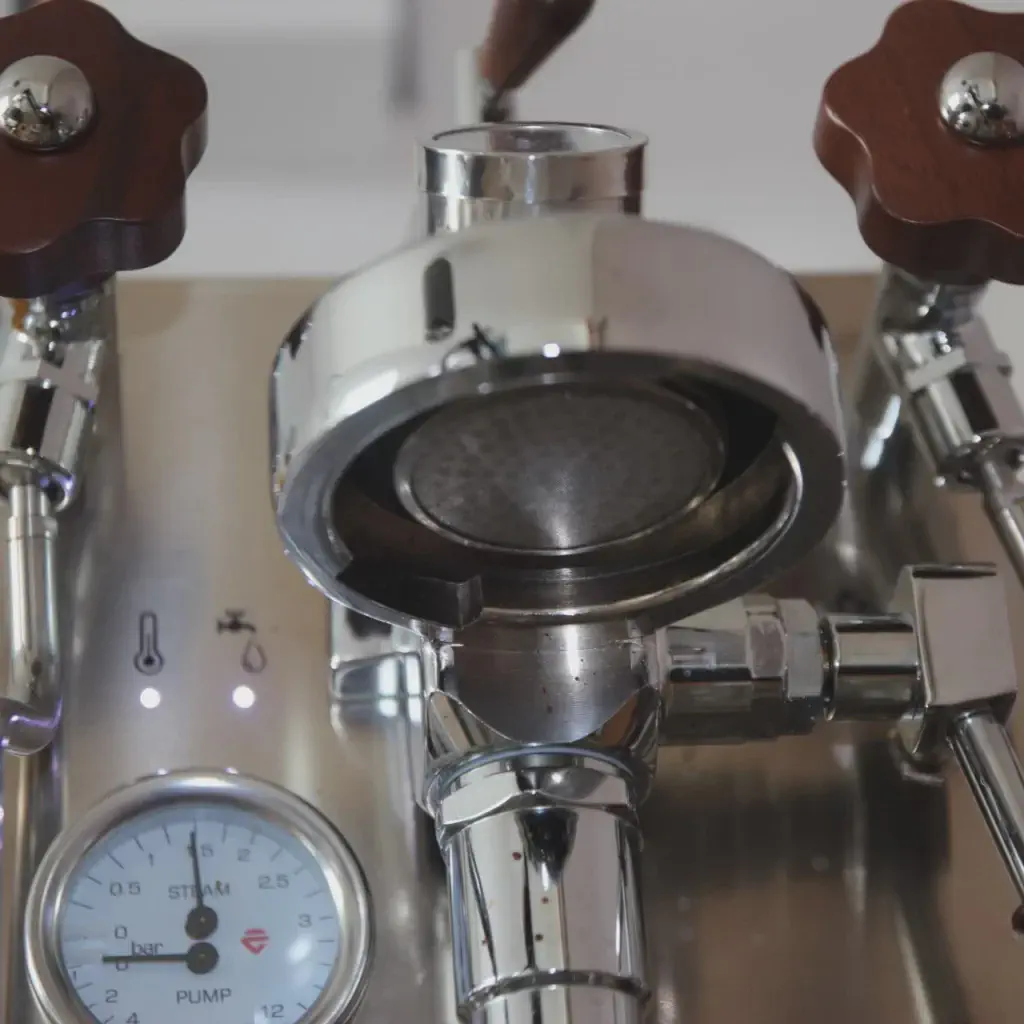
- I recommend a multi-layer model approximately 1.7 mm thick.
- After tamping, I place the puck screen directly on the coffee puck.
Tip #4: Adjust the espresso grind fineness
Beyond using good accessories, grind fineness is a decisive factor.
- A grind that is too fine blocks the water, causes channeling, and generates bitterness.
- A grind that is too coarse allows water to pass through too quickly, causing under-extraction and a flat coffee.
Personally, I use an electric grinder daily, but also manual grinders:
- For a quality manual grinder, I recommend the 1Zpresso J-Ultra affiliate link, appreciated for its precision and ease of adjustment. I discuss it in more detail in this article.
- If you prefer a more accessible option, the Kingrinder K6 affiliate linkis also a very good choice. I present it here.
If your grind is too fine, the water eventually creates escape channels.
This results in:
- an extraction time that is too long,
- a loss of aromas,
- and sometimes irregular pucks (some areas dry, others waterlogged).
Conversely, a grind that is too coarse results in:
- water passing through too quickly,
- generalized under-extraction,
- a cup poor in flavors.
Conclusion: 4 pillars to avoid channeling
It is important to be rigorous and consistent in preparing your espresso, especially if you are using professional equipment.
The slightest imperfection can have repercussions on the extraction.
In summary, to avoid channeling with a bottomless portafilter, remember these 4 essential pillars:
- Distribute the grounds evenly (WDT or coffee distributor).
- Tamp straight and with regularity (suitable tamper + tamping station).
- Use a puck screen to homogenize the water arrival and protect the shower screen.
- Adjust the grind fineness with a quality espresso grinder.
Why do I have channeling with my espresso?
Channeling occurs when the coffee puck is not homogeneous: poor distribution of grounds, tilted tamping, grind too fine or too coarse. Water always seeks the path of least resistance.
How to avoid channeling with a bottomless portafilter?
Use a WDT or distributor to homogenize the grind, tamp straight with a suitable tamper, place a puck screen to distribute the water, and adjust the grind fineness according to your espresso grinder.
Is the puck screen essential?
No, but it provides real convenience: it limits channeling, keeps the shower screen clean, and makes extractions more consistent. It’s a very useful barista accessory if your machine has an aggressive shower screen.
What is the best accessory to avoid channeling?
Each tool has its role:
- The WDT to break up clumps and distribute.
- The calibrated tamper to tamp straight.
- The puck screen to better distribute the water.
Ideally, combine these three accessories for consistent results.
My coffee is bitter despite everything, is it channeling?
Not necessarily. Bitterness can come from a grind that’s too fine, coffee that’s too roasted, or water temperature that’s too high.
Channeling often causes unbalanced flavors, more than just bitterness.
